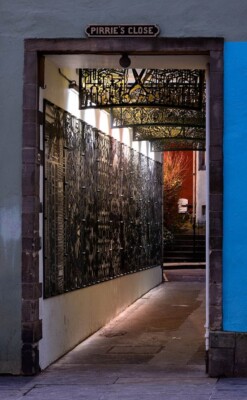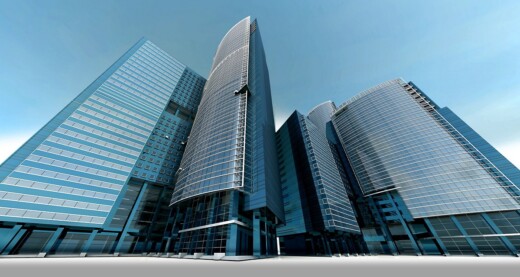Exploring reasons for rejected planning application advice, Building construction tips
Exploring the Likely Reasons Your Planning Application Was Rejected
24 May 2022
Having a planning application rejected can be extremely frustrating and demotivating especially if you already had everything in place to start a project. Confusion arises when you do not know why this happened, and you get frustrated when you realise your project will be delayed and take much longer than you anticipated. To help you understand what is going on, we will discuss some of the likely reasons you got a “no” from the council.
Loss of Privacy and Overshadowing
Privacy is a fundamental right, and no one has the right to infringe on someone else’s privacy. This is the reasoning used when a building or new project would lead to the loss of privacy for someone else. This happens when you have two buildings beside each other. If you were to add more stories to one building, it would overlook the other, thus leading to a loss of privacy. This also happens if a building would be taller than the neighbour’s fence such that you can see into their backyard or their home.
Overshadowing and loss of privacy are often cited together because they stem from the same thing. Overshadowing happens when one building causes the one beside it to lose natural light. If your building is taller than the other or too close when the project is completed, your planning application will be rejected.
Ecological Reasons
The ecological reasons for planning application rejection are often not understood because this is a very broad term. However, there are a few things we already know from past applications. The two main things that are looked at are the environment and any endangered species that might live in that environment. The ecological reason for rejection could also be that a change to the environment due to new construction would destroy the endangered animals’ feeding or breeding grounds.
There are many endangered and protected species in the UK, but a notable one is bats which do not do so well in new habitats and habitats that they are yet to colonise. This is why any changes to their habitats, feeding or breeding grounds are protected by law.
If you suspect that bats could be living on a property you want to change or tear down, or if their habitat will be destroyed, you need to commission a bat survey. A bat survey is carried out so you can ascertain if bats live in the building or will be harmed and put in place mitigation measures if they are or will be. You need a qualified bat surveyor to do the survey and they will also help ensure your planning application gets approved.
If you suspect your building could harbour bats or you could harm their habitat during the course of your project, you should look into bat surveys. Arbtech is a UK bat survey company that has professionals qualified in both scoping and emergence surveys to help you obtain the necessary paperwork required for your planning application. They also do other surveys including biodiversity net gain, invasive species, and protected species surveys.
Damage to Host Building
This is another confusing reason because it is subject to interpretation. This reason is given when a new project or addition would cause damage to an existing building or project. This could be in the shape, stability or anything else caused by materials used, construction method and any other reason. Because it encompasses so much, one person can interpret it differently from the next making it very confusing.
This reason is also subjective because a change you make to a detached family home would ruin a Victorian home. This is why it is looked at on a case-by-case basis and why you should ask the council what they mean if they give you this reason.
Causing a Negative Effect on Appearance and Character
The reasons we have looked at above only apply to a single house, home or building. This one applies to the whole neighbourhood. All neighbourhoods have their unique appearances and characters. For example, a neighbourhood might have brick houses that all have clay tiles.
If you wanted to replace those tiles with shingles, you might have your application rejected because you would be changing the look and character of the neighbourhood. Although this reason can be given in residential areas, it is often given in conservation areas. Backland development is a contentious issue in London because of conservation areas that cannot be changed due to projects cropping up there.
Small Size and Poor Quality of Accommodation
Councils have minimum requirements for living space areas and the quality of these spaces. Both of these are crucial factors that councils consider during the construction of new homes or the modification of a space to create smaller living areas.
The quality of accommodation usually applies to things like outdoor space and natural light, both of which must be adequate for all homes. Failure to adhere to these rules is actually one of the most cited reasons for permission being denied.
Negative Impact on Amenities
To maintain a certain standard of living and desirability of certain neighbourhoods, councils must ensure that all amenities can serve everyone. If any part of your project impacts these amenities negatively, your application will be rejected.
Amenities in this case is a broad term that can cover anything outside your home but within the bounds of your neighbourhood. Gardens, parking, roads, security features and balconies can all be termed amenities because they affect the quality of life of everyone around you.
Parking and Traffic Pressure
Although roads and parking are sometimes classified as amenities, you might get a rejection citing both of them. Councils do not want to increase pressure on their roads and parking.
This can happen when single-family homes are converted to flats that can accommodate more people. New buildings and commercial developments can also cause these pressures.
When your planning application is rejected, you can resubmit it. Do not do so before understanding the underlying reason and rectifying all the issues you can. This is the best way of receiving a positive answer the second time around.
Comments on this guide to exploring reasons for rejected planning application article are welcome.
Architecture
St James Quarter’s W Edinburgh

W Edinburgh Hotel at St James Quarter
Edinburgh’s historic closes

photo © Tom Duffin
Edinburgh World Heritage Twelve Closes Project
Comments / photos for the Exploring reasons for rejected planning application advice page welcome

